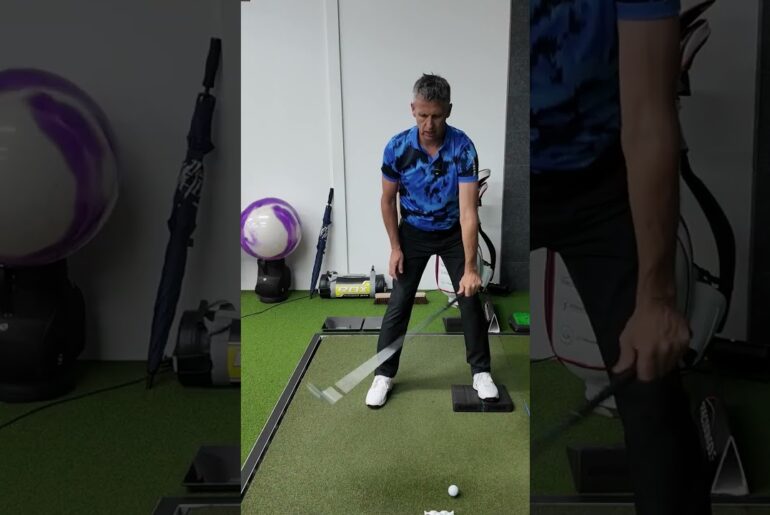Advanced golf analytics significantly influence betting odds by providing a comprehensive, data-driven understanding of player performance, shifting the focus away from traditional rankings and gut feelings
Join below to see the full training videos 👇🏻
https://www.patreon.com/sportstradermick
🔥Click to watch 👇🏻
Unlock the secrets of sports odds!
https://www.patreon.com/sportstradermick
#SportsAnalytics #DecodingOdds #CriticalThinking
💥 Free Training Guides and Premium Selections: Join now and enjoy free training guides, ebooks, and top-notch selections to boost your sports trading skills. Visit our Patreon page for more details.
⚽ Start Trading for Better Value: Don’t settle for being a betting ‘mug.’ Unleash your trading potential and maximise the value of your bets. Connect with me on various social channels, including YouTube.
🌐 Discover More: Visit my website http://bit.ly/sports-trader-mick-site for additional resources, tips, and free selections.
If you’re interested in mastering the Betfair exchange and optimising your sports trading or betting strategies, come and join our thriving sports trading
community today.
Tennis Trading Strategies, Optimization, and Performance #betfair #tennisbetting
All right, let’s get right into it. For most of us, betting on golf feels like a total lottery, right? You scan a massive list of names, pick one, and just cross your fingers. But what if you could change that gamble into a solid game plan? What if you could stop just betting on a winner and start trading the predictable swings of the game itself? Today, we’re going to pull back the curtain and show you how data turns the golf course into your own personal stock market. So, here’s the plan. We’ll start by looking at why picking a winner in golf is such a tough nut to crack. Then we’ll make that huge mental shift from betting to trading. I’ll show you the one stat that truly changes everything. We’ll look at some powerful inplay strategies, cover the absolute must know ground rules, and by the end, you’ll have a totally new way to watch the game. Okay, so let’s just lay out the problem here. You’ve got a typical PGA Tour event with like over 150 players. Trying to pinpoint the one guy who’s going to come out on top after 4 days and 72 holes of intense pressure, well, the odds are just stacked against you. It’s a fun guessing game for sure, but it’s not a reliable way to make a profit. And you know how most people try to solve this puzzle? They fall back on the same old cliches. They look at stuff like driving accuracy, thinking that hitting the fairway is the be all and end all. And of course, you’ve heard it a million times, drive for show, putt for dough, which puts all the focus on what happens on the green. I mean, these ideas sound good, but as you’re about to see, the actual data tells a very, very different story. Okay, so this is where everything changes. This is the big aha moment. What if your goal wasn’t to pick the one winner out of 150? What if instead your goal was to profit from predictable price movements that happen all through the tournament? This isn’t just a small tweak. It’s a fundamental shift from being a better to becoming a trader. See, sports trading is a whole different ballgame than placing a simple bet. It’s active. It’s dynamic. You can back a player, which is basically like buying their stock when you think their price will go up. And you can lay a player, which is like shorting a stock, betting against them. This gives you incredible flexibility and control from the first T-shot on Thursday to the final putt on Sunday. And that brings us to the bread and butter of golf trading, the back to lay. It’s honestly brilliantly simple. You find a player you think is undervalued. Let’s say their odds are way out at 80 to1. You back them. Then as they start climbing the leaderboard, their odds come crashing down. That’s when you lay them at their new much lower price. Boom. You’ve just locked in a guaranteed profit. And now you don’t even care who actually lifts the trophy. So if we’re not just hunting for the overall winner, what are we looking for? How do we find these players whose prices are about to move? Well, the answer is hiding in plain sight inside one revolutionary statistic that has completely flipped professional golf analysis on its head. It’s called strokes gained, and you can pretty much forget everything else. This isn’t just about their final score. This metric measures every single shot a player takes and compares it to how the average player on the field performs from that same spot. So, it tells you exactly how much better or worse a player is performing than all of his competitors shot by shot. And here is where we just completely demolish that old wisdom. Look at this. The data shows that strokes gained on approach shots, that’s hitting it onto the green, has a massive correlation with shooting lower scores. And that classic stat, fairways hit percentage, it barely even moves the needle. The proof is right there in black and white. Hitting it close is way, way more important than just being on the short grass. And this isn’t just a hunch. It totally debunks that putt fordo myth, too. Data science has confirmed it. The long game, your performance off the tea and with your approach shots are the top two predictors of a player’s score. The short game matters, of course, but the long game is where you set yourself up to win. All right, so we’ve got this game-changing data, but how do we actually use it to make money? Let’s turn all this theory into some real actionable strategies you can use while a tournament is live. One of the most powerful inplay moves you can make is laying the leader. When a player gets a big lead, especially on a Sunday, their odds get ridiculously short. But the pressure of being out in front is just immense. And golf is a game of tiny margins. By betting against them, you’re positioning yourself to cash in on any little mistake any moment the pressure gets to them and they falter. And there is no better, more painful, more perfect example of this than the final round of the 2016 Masters. Jordan Spe, the defending champ, looked like he was just going to cruise to another green jacket. He looked unstoppable. So as speed made the turn onto the back nine, he had a fivot lead. His odds were a tiny 1.09, which basically means the market thought he had a 91% chance of winning. But then Aiman corner happened. A bogey on 11. Okay, no big deal. And then the absolute disaster on the 12th hole. Two balls in the water, a quadruple bogey. In the span of about 20 minutes, his lead was completely gone. For anyone who had laid him at those super low odds, it was the trade of a lifetime. Now, as exciting as that sounds, this is not a free-for-all. You can’t just go in there blindly. Profitable trading is built on a solid foundation of discipline and a few rules you just can’t break. First up, and this is absolutely critical, is liquidity. That’s just a fancy word for how much money is in the market. You need high liquidity so you can get in and more importantly out of your trades whenever you want. This means you stick to the big events, the majors, the World Golf Championships, the big PGA Tour stops. You stay away from the smaller tours where you could get stuck in a trade with no way out. And this next part, this is what truly separates the professionals from the gamblers. You have to have a plan. You need to know your entry and exit points before you even click the button. You never ever risk more than a small fixed percentage of your bankroll. We’re talking 1 to 5% max. And whatever you do, do not chase a losing trade with a bigger emotional one. Get really good at one strategy first, then you can expand. So when you put all of this together, the trader mindset, the data, the discipline, it completely changes how you experience a golf tournament. You stop being just a casual fan on the couch, and you become an active market analyst. Your whole perspective just shifts. You’re no longer just asking yourself, who do I think is going to win? Instead, you’re asking much smarter questions. You’re looking at the strokes gain numbers and asking, is this performance sustainable? Or is he getting lucky? Whose price is way too low right now? you start watching golf like it’s the stock market, looking for value and opportunities. Now, this has been a really quick introduction to these core concepts. We’ve just scratched the surface, but if you want to see how to actually take these ideas and apply them step by step, there’s a lot more to explore. So, if you really want to dive deep, I’ve put together a full detailed video tutorial over on my Patreon page. It’s got in-depth trade setups, the stat resources I use, and step-by-step guides to get you up and running. You can find all of that at patreon.com/sportsradermick. We’ve seen how a little bit of data can completely crack the code and unlock a new way to engage with golf. It really leaves you with a fascinating question, doesn’t it? What other sports are out there just waiting for the right data to reveal all their hidden secrets?







